Crystal-clear Protection: Using waterproofing to safeguard against concrete corrosion
by Katie Daniel | June 8, 2017 2:12 pm
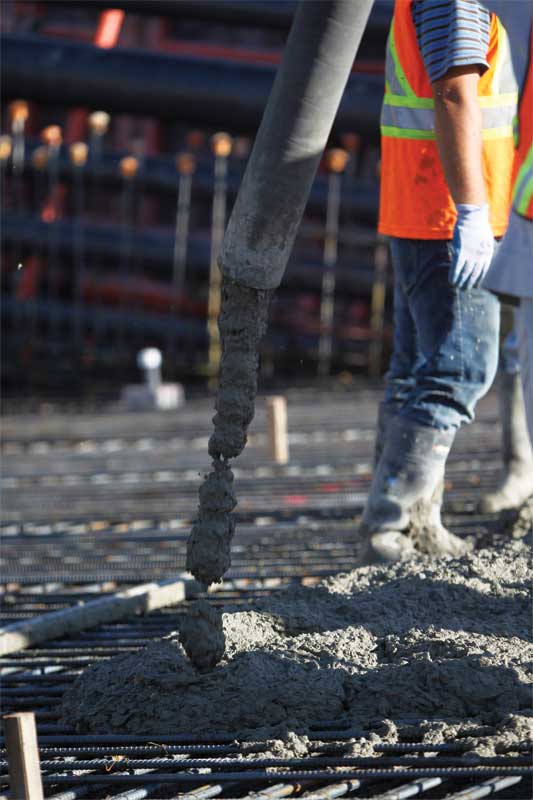 [1]
[1]by Kris Till
Concrete is the most-used manufactured material[2] in the world, with nearly three tons per person used annually.
Its benefits to society are immense, as it is used to build schools, hospitals, apartment blocks, infrastructure, and more. Currently, few materials in the world can rival concrete in terms of effectiveness, price, and performance.
The world’s largest unreinforced concrete dome, the Pantheon in Rome, is still in excellent condition after nearly 1900 years in service—yet in this century, many modern concrete structures are deteriorating. The critical difference between ancient and modern structures is the use of steel reinforcement. With the added steel, various new problems can arise. The principal difficulty is often corrosion due to water penetration, which accounts for more than 80 percent of all damage to reinforced concrete structures, reduces the life of a structure, and increases maintenance costs. (See Jure Franciskovic’s “Protection and Repair of Reinforced Concrete Structures by Means of MCI-inhibitors and Corrosion Protective Materials,” published in Structural Engineering Conferences, 2006.) What can be done to prevent this? Crystalline waterproofing provides one solution.
Combating corrosion
Three components are necessary for corrosion in reinforced concrete: steel, water, and oxygen. Eliminating any one of these will prevent the oncoming chemical reaction and damage. This is why there is no corrosion in dry concrete, and also why concrete fully submerged in water has limited corrosion, except in instances where the water can entrain air.
Steel corrosion can take place within a reinforced concrete structure for two primary reasons:
- chloride ions cause a localized breakdown of the passive film on the steel; or
- carbonation causes a general breakdown of the passive film.
Overall, concrete is a great host for rebar—its high alkalinity means the steel reinforcing bars are passivated by an iron oxide film (i.e. Fe2O3) providing a protective layer against corrosion. However, while hardening, concrete develops minute pores, which allow potential ingress of corrosive agents that damage this layer. Without the passive film protecting the steel, corrosion occurs at a much faster rate.
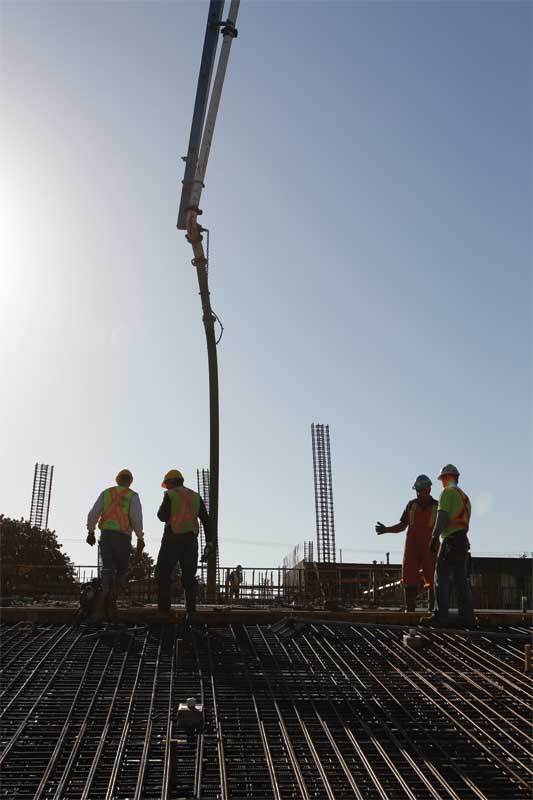 [3]
[3]An area’s climate also has a great influence on corrosion rate. For example, the Gulf Coast has an extremely aggressive environment, characterized by high ambient temperature and humidity, severe ground salinity with high levels of chlorides, and sulphates in the groundwater. Other factors include poor quality of construction materials—particularly aggregates—and the presence of high concentrations of sulphate salts in the service environment. (For more, consult Sam Mathew’s Concrete Corrosion: Methods to Control this Perennial Problem in the Middle East.)
Corrosion begins to affect a concrete structure’s integrity when its products (i.e. rust) occupy a greater volume than the original steel. This expansion creates tensile stresses in the concrete causing it to stain, crack, and spall. Cracks are a direct path for corrosive agents to reach the steel, and can develop to the point the functional service life is reached prematurely.
By the time the signs of damage become visible externally, the corrosion has reached an advanced stage. At this point, regardless of site location, rehabilitation costs will be expensive, and the repair process complicated. Therefore, water must be kept from penetrating the reinforced concrete and diverted from attacking the steel rebar within.
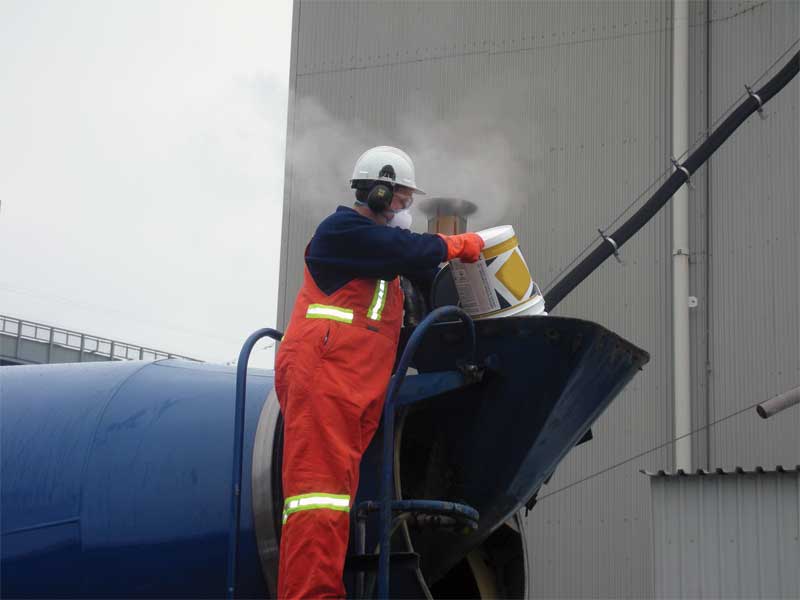 [4]
[4]Traditional waterproofing strategies
An effective corrosion-control system should extend the time before corrosion initiation, reduce the corrosion rate of embedded steel, or do both. Some traditional measures are:
- cathodic protection;
- corrosion-inhibitor admixtures; and
- anti-corrosion coating.
Unfortunately, these methods have proven to be less effective than desired. Dense concrete cover over reinforcing steel leaves the material vulnerable to cracking and other issues. Corrosion inhibitors provide only temporary protection. Cathodic protection is expensive, and repair procedures have short service lives and must be continuously re-implemented.
As mentioned, water is one of the three elements required for corrosion to occur. It acts as a carrier for chloride ions—the leading cause of deterioration of the passive layer. Hence, the critical factor in concrete corrosion is water penetration. It is important to use concrete with low permeability, and to use an appropriate amount of concrete cover for the application.
Fluid- and surface-applied (i.e. sheet) membranes can form a barrier against water penetration on the outside of the concrete. However, surface-applied waterproofing membranes have limitations, and are vulnerable to puncture damage and failure. Moving away from the tradition, success has been attained by replacing the need for an external membrane with an internal one.
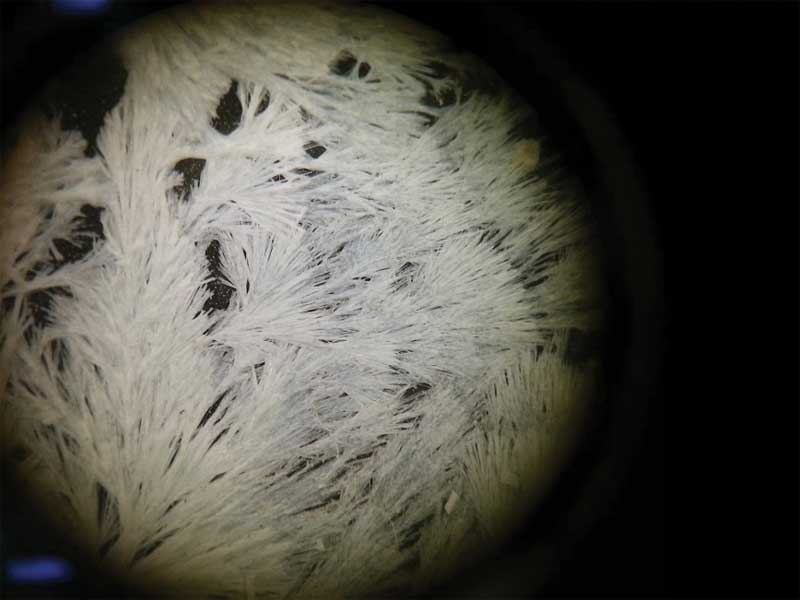 [5]
[5]Crystalline technology
With this method, an integral crystalline waterproofing admixture is included with the concrete mix at batching or added directly to the ready-mix truck, eliminating the need to use a sheet or fluid membrane. It is effective in reducing concrete’s permeability without the costly materials, labor, or construction time necessary with external methods.
These types of admixtures provide unique benefits to concrete, reducing the penetration of water and waterborne chemicals through:
- crystallization and lowering permeability;
- reducing the size and quantity of cracks; and
- self-sealing cracks and micro-cracks that form later in the structure’s life.
The self-sealing method has proven effective through successful implementation in various structures and climates around the world. Crystalline chemicals facilitate a reaction that causes long, narrow crystals to form during the carbonation process. These crystals fill the pores, capillaries, and hairline cracks of the concrete mass. As long as moisture remains present, crystals continue to grow throughout the concrete. Once it has dried, the crystalline chemicals sit dormant until new cracks form (through loading or exposure) and additional water begins to penetrate the material, at which point crystallization begins again.
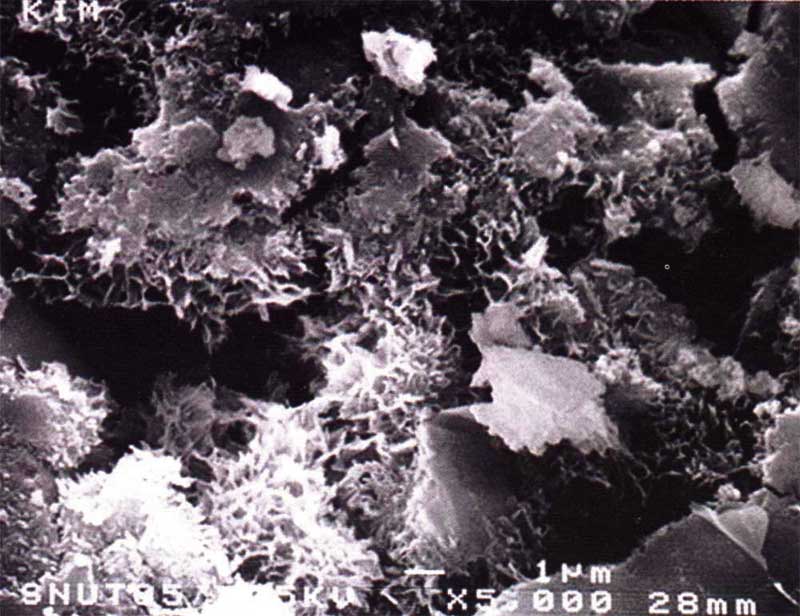 [6]
[6]This allows concrete to self-seal small cracks without external repair efforts, decreasing the need for costly maintenance and increasing the structure’s useful life. The process of self-sealing (similar to that of healing a paper cut, where skin closes itself up over time) is a time-dependent phenomenon influenced by four naturally occurring mechanisms:
- formation of calcium carbonate or formation of calcium hydroxide;
- continued hydration;
- sedimentation of particles; and
- swelling of the cement matrix.
One example of waterproofing with crystalline technology in a high-performance environment is the One57 skyscraper in New York City. Designed by Christian de Portzamparc, One57 was the tallest residential building in the city at the time of its 2014 completion at 306 m (1005 ft). A critical issue for a building of this size is the difficulty of fighting fire in the upper floors of the building, so a fire-suppression system is typically installed. However, these systems require storage of very large volumes of water, meaning leaks could become an issue.
A crystalline membrane was used to waterproof One57’s large concrete tank on the 75th floor, which sits on a suspended slab. This eliminated typical concerns relevant to these tanks, which are often made of steel (which corrodes), wood (which decays over time), or concrete reliant on an external membrane that can tear.
ICWs can control corrosion in reinforced concrete by impeding the development of corrosive conditions caused by moisture flow. The result is a structure that has increased durability, a longer lifespan, and lower maintenance costs over its service life—all essential for sustainable building practices.
Kris Till is a business executive with 18 years of progressive experience, specializing in the delivery of technical training, new product development, consultative sales, and client relationship management. At Kryton International, Till is responsible for all aspects of product strategy, from research and development through launch, positioning, promotion, pricing, and training. He can be reached via e-mail at ktill@kryton.com[7].
- [Image]: https://www.constructionspecifier.com/wp-content/uploads/2017/06/Kryton-3066.jpg
- most-used manufactured material: http://minerals.usgs.gov/minerals/pubs/mcs/2007/mcs2007.pdf
- [Image]: https://www.constructionspecifier.com/wp-content/uploads/2017/06/Kryton-3019.jpg
- [Image]: https://www.constructionspecifier.com/wp-content/uploads/2017/06/Crystalline-Admixture.jpg
- [Image]: https://www.constructionspecifier.com/wp-content/uploads/2017/06/20160720_1646482.jpg
- [Image]: https://www.constructionspecifier.com/wp-content/uploads/2017/06/KIM-yes-Magnified-Concrete_CMYK.jpg
- ktill@kryton.com: mailto:ktill@kryton.com
Source URL: https://www.constructionspecifier.com/crystal-clear-protection-using-waterproofing-to-safeguard-against-concrete-corrosion/